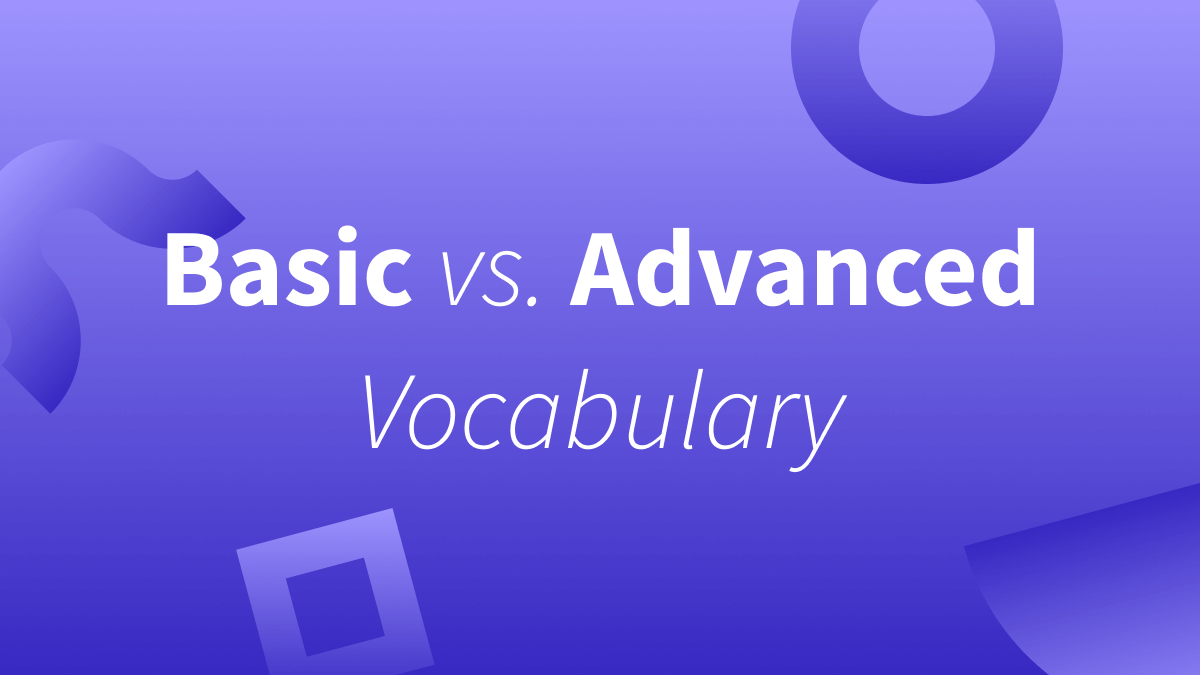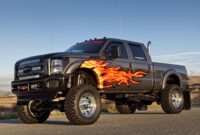Basic Trucks For Sale: Your Comprehensive Guide to Unearthing the Ultimate Workhorse sale.truckstrend.com
In a world increasingly dominated by luxury SUVs and feature-laden pickups, a quiet revolution is happening for the pragmatic buyer: the resurgence of interest in "basic trucks." These are not the shiny, chrome-decked, touchscreen-equipped behemoths you see in modern commercials. Instead, basic trucks are the quintessential workhorses – stripped-down, durable, and purpose-built machines designed to haul, tow, and tackle tough jobs without complaint or unnecessary frills. For small businesses, contractors, DIY enthusiasts, and anyone needing reliable utility on a budget, a basic truck isn’t just a vehicle; it’s a smart, cost-effective investment that prioritizes function over form. This comprehensive guide will delve into every aspect of finding, evaluating, and purchasing your ideal basic truck.
What Exactly Are "Basic Trucks"?
Basic Trucks For Sale: Your Comprehensive Guide to Unearthing the Ultimate Workhorse
At their core, "basic trucks" are defined by their utilitarian nature and lack of superfluous features. They are the antithesis of modern, luxury-oriented pickups. Key characteristics often include:
- Stripped-Down Trim Levels: Often base models, sometimes referred to as "work trucks," "fleet models," or "WT" (Work Truck) trims.
- Minimal Amenities: Expect manual windows and door locks, vinyl or cloth bench seats, basic AM/FM radios (if any), and possibly no cruise control or power mirrors. Air conditioning is usually present, but not always.
- Focus on Durability: These trucks were built to withstand daily abuse on job sites, often featuring robust frames, simpler mechanical systems, and less complex electronics that can fail.
- Older Model Years: While some manufacturers still offer basic trims, the true "basic truck" sweet spot is often found in older generations (e.g., 1990s to early 2010s) before excessive technology became standard.
- Common Configurations: Regular Cab (two-door), Long Bed, and sometimes 2-wheel drive (2WD) are common, though 4-wheel drive (4WD) basic models exist. Engines are typically V6 or V8, chosen for their reliability and torque rather than fuel efficiency.

They stand in stark contrast to today’s trucks, which often boast leather interiors, advanced infotainment systems, multiple cameras, and sophisticated driver-assist technologies. A basic truck offers raw, unadulterated utility.
Why Choose a Basic Truck? The Core Benefits
Opting for a basic truck offers a compelling array of advantages, particularly for budget-conscious buyers and those who value practicality above all else.
- Cost-Effectiveness: This is arguably the biggest draw. Basic trucks have significantly lower purchase prices compared to newer, feature-rich models. This also translates to cheaper insurance premiums, lower registration fees, and often more affordable parts and labor for repairs due to simpler mechanics.
- Reliability & Durability: Built for work, these trucks are designed to be tough. With fewer complex electronic systems to malfunction, they often prove to be incredibly reliable, requiring only regular maintenance to keep running for hundreds of thousands of miles.
- Ease of Maintenance & Repair: Simpler engines, transmissions, and electrical systems mean that diagnostics are often straightforward, and many repairs can be performed by a competent DIY mechanic or a local shop without specialized equipment. Parts are generally abundant and inexpensive.
- Unparalleled Utility & Functionality: They excel at their primary purpose: hauling materials, towing trailers, and navigating challenging terrains. The absence of delicate interiors means you’re less worried about scratching or dirtying them when transporting tools, lumber, or dirty equipment.
- Lower Depreciation: Since basic trucks are often purchased after significant initial depreciation, their value tends to hold more steadily over time, making them a relatively stable asset.
- No Frills, No Worries: There’s a certain freedom in owning a vehicle you don’t have to constantly worry about. Dings, scratches, and mud are often badges of honor, not causes for despair, making them perfect for messy jobs or adventurous outings.


Identifying Your Needs: Is a Basic Truck Right For You?
Before diving into the market, take a moment to honestly assess if a basic truck aligns with your specific requirements.
- What’s its primary purpose? Are you hauling heavy loads daily, towing a small boat on weekends, or just needing occasional trips to the dump or lumberyard? If your needs are purely utilitarian, a basic truck is likely a fit.
- What’s your budget? Not just for the purchase price, but also for insurance, fuel (older trucks can be thirsty), and potential initial repairs or upgrades. Be realistic.
- How often will you use it? If it’s a daily driver for long commutes, the lack of creature comforts might become an issue. For occasional use or dedicated work, it’s perfect.
- What are your comfort expectations? Are you okay with manual windows, a basic radio, and perhaps a less refined ride? If modern conveniences are a must-have, a basic truck might not be for you.
- Do you have basic mechanical aptitude (or a trusted mechanic)? While reliable, older vehicles will inevitably need some attention. Being prepared for this is key.
Where to Find Basic Trucks For Sale
The hunt for a basic truck often requires a different approach than buying a new vehicle.
- Online Marketplaces: Websites like Craigslist, Facebook Marketplace, eBay Motors, and local classifieds sites are goldmines. They connect you directly with private sellers, often yielding better prices. Be prepared to filter through many listings.
- Used Car Dealerships (Independent): Smaller, independent used car lots often specialize in older, more affordable vehicles, including basic trucks. They typically offer some level of vetting and can sometimes provide financing.
- Auctions: Government surplus auctions, impound lot auctions, and public auto auctions can offer incredibly low prices. However, these are often "as-is" sales with limited opportunity for inspection, making them riskier for inexperienced buyers.
- Private Sellers (Local): Keep an eye out for "For Sale" signs in your neighborhood or local community boards. Word-of-mouth can also lead to hidden gems.
- Fleet Sales: Companies upgrading their fleets sometimes sell off older, well-maintained work trucks. These might be advertised directly or through specialized auction houses.
Key Considerations When Buying a Basic Truck
A thorough inspection and informed decision-making are paramount when purchasing an older, basic truck.
- Rust is the Enemy: Critically inspect the frame, cab corners, rocker panels, wheel wells, and bed for rust. Surface rust on the body can be cosmetic, but frame rust is a serious safety concern and a deal-breaker.
- Engine & Transmission Health: Listen for unusual noises (knocks, ticks, whines). Check fluid levels and condition (transmission fluid should be red, not brown or burnt-smelling). Look for leaks. Test drive to ensure smooth shifting and power delivery.
- Maintenance History: Ask for service records. A truck with high mileage but consistent maintenance is often a better buy than a low-mileage truck with no history.
- Mileage vs. Condition: Don’t be scared by high mileage if the truck appears well-maintained. Basic trucks are known for longevity. Conversely, unusually low mileage on a very old truck can sometimes indicate long periods of sitting, which can cause other issues.
- Common Problem Areas: Research known issues for the specific make, model, and year you’re considering. For example, some Ford models had spark plug issues, and certain GM trucks are known for rust in specific areas.
- Tires, Brakes, Suspension: Check tire tread depth and even wear. Test the brakes for pull or pulsation. Bounce each corner of the truck to check shock absorbers.
- Electrical & HVAC: Test all lights, gauges, wipers, horn, and the heating and air conditioning systems. AC repairs can be costly.
- Title Status: Ensure the title is clear and matches the VIN on the vehicle. Avoid salvage or rebuilt titles unless you are highly experienced and understand the risks.
Popular Basic Truck Models (Examples)
While "basic truck" is a category, certain models are frequently found in this segment due to their historical popularity, durability, and availability of older models:
- Ford F-150 (Older Generations): The F-series has been America’s best-selling truck for decades, meaning older models are abundant and parts are easy to find. Look for models from the 9th (1992-1996), 10th (1997-2003), and 11th (2004-2008) generations.
- Chevrolet Silverado / GMC Sierra (Older Generations): Similar to Ford, older C/K series (pre-1999) and early Silverado/Sierra (1999-2007 classic body style) are reliable workhorses.
- Ram 1500 (Older Generations): The second-generation Ram (1994-2001) and third-generation (2002-2008) are often found as basic work trucks.
- Ford Ranger / Chevrolet S-10 / GMC Sonoma: These older mid-size trucks are excellent for lighter duties, fuel efficiency, and easier maneuverability.
- Toyota Tacoma / Tundra (Older Generations): While often holding their value better, older Tacomas (especially 1st gen) and early Tundras are incredibly reliable and make fantastic basic trucks if you can find them at a good price.
Tips for a Successful Purchase
Arm yourself with these strategies to ensure a smooth buying experience.
- Set a Firm Budget (and Stick to It): Include the purchase price, potential immediate repairs, registration, and insurance.
- Bring a Knowledgeable Friend or Mechanic: A second pair of eyes, especially an expert’s, can spot issues you might miss.
- Don’t Rush: There are many basic trucks out there. If one doesn’t feel right, walk away. Patience is a virtue.
- Get a Pre-Purchase Inspection (PPI): For a small fee (typically $100-$200), an independent mechanic can thoroughly inspect the truck and provide an unbiased report on its condition and any necessary repairs. This is the best money you can spend.
- Check a VIN History Report: Services like CarFax or AutoCheck can reveal accident history, previous owners, odometer discrepancies, and reported maintenance.
- Negotiate Respectfully: Most private sellers and used car dealers expect some negotiation. Be polite but firm. Highlight any issues you found during inspection to justify a lower offer.
Potential Challenges & Solutions
Even with careful planning, some hurdles might arise when buying a basic truck.
- Challenge: Hidden Rust/Frame Damage.
- Solution: A thorough pre-purchase inspection by an experienced mechanic who lifts the vehicle is essential. If significant frame rust is found, walk away.
- Challenge: Unexpected Mechanical Issues Post-Purchase.
- Solution: Factor in a repair contingency budget (10-20% of the purchase price). The PPI helps minimize this risk, but older vehicles will always need ongoing maintenance.
- Challenge: Lack of Modern Comforts (e.g., no Bluetooth, poor audio).
- Solution: Aftermarket upgrades are readily available. A new head unit with Bluetooth is often inexpensive. You can add backup cameras, better speakers, and even seat covers for improved comfort.
- Challenge: Higher Fuel Consumption.
- Solution: Older V8s, especially, can be thirsty. Factor fuel costs into your overall budget. If fuel economy is paramount, consider older V6 or even 4-cylinder mid-size trucks.
- Challenge: Finding Parts for Very Old or Obscure Models.
- Solution: Stick to popular models (F-150, Silverado, Ranger, Tacoma) for which parts are abundant. Research part availability before buying if considering an less common model.
Pricing Table: Representative Basic Truck Costs (Estimated Ranges)
Please note: Prices are highly variable based on location, exact condition, mileage, specific model, and market demand. This table provides a general estimated range and should be used as a guideline, not a definitive price list. Always conduct thorough research for your specific area.
| Truck Type / Example Model (Older Generations) | Typical Age Range (Years) | Condition | Estimated Price Range (USD) | Key Features / Notes |
|---|---|---|---|---|
| Full-Size Work Truck | 15-25+ | Fair | $2,000 – $5,000 | High mileage, visible wear/minor dents, potential minor issues. |
| (e.g., Ford F-150, Chevy Silverado 1500, Ram 1500) | Good | $5,000 – $10,000 | Well-maintained, moderate mileage, solid mechanicals. | |
| Excellent | $10,000 – $18,000+ | Lower mileage for age, very clean, meticulously maintained. | ||
| Mid-Size Work Truck | 15-25+ | Fair | $1,500 – $4,000 | Higher mileage, cosmetic flaws, some rust. |
| (e.g., Ford Ranger, Chevy S-10, Nissan Frontier) | Good | $4,000 – $8,000 | Reliable, moderate wear, good for lighter duty. | |
| Excellent | $8,000 – $15,000+ | Very clean, well-preserved examples. | ||
| Heavy-Duty Basic (250/2500) | 15-25+ | Fair | $4,000 – $8,000 | High mileage, signs of heavy use, typically diesel or V8. |
| (e.g., F-250, Silverado 2500, Ram 2500) | Good | $8,000 – $15,000 | Solid for towing/heavy hauling, good mechanicals. | |
| Excellent | $15,000 – $25,000+ | Harder to find, often sought after for specific uses. | ||
| Very Old / "Beater" Truck | 25+ | Poor | Under $2,000 | Often needs significant work, for parts or dedicated projects. |
| (Any Make/Model) | Running | $1,000 – $3,000 | Runs and drives, but rough, for very light or farm use. |
Frequently Asked Questions (FAQ)
Q1: What’s considered good mileage for a basic truck?
A1: Unlike passenger cars, high mileage (200,000+ miles) isn’t necessarily a deal-breaker for a basic truck if it’s been well-maintained. Many can run for 300,000+ miles. Condition and maintenance history are more important than the odometer reading alone.
Q2: Are basic trucks reliable?
A2: Yes, generally. Their simplicity means fewer complex systems to break down. Many older basic trucks were built with durability in mind and can be incredibly reliable with regular maintenance.
Q3: Can I get financing for an older basic truck?
A3: It can be challenging. Traditional banks often won’t finance vehicles over a certain age or mileage. You might need to explore personal loans, credit unions, or in-house financing from certain used car dealerships (though interest rates can be higher). Often, cash is king for these types of purchases.
Q4: What’s the cheapest type of basic truck?
A4: Generally, older 2WD regular cab, long bed, V6 or even 4-cylinder mid-size trucks (like a Ford Ranger or Chevy S-10 from the 90s/early 2000s) will be the most affordable. Full-size trucks with higher mileage and some cosmetic flaws also fall into the lower price bracket.
Q5: Should I buy a 2WD or 4WD basic truck?
A5: This depends on your needs. If you primarily drive on paved roads and don’t encounter snow, mud, or off-road conditions, a 2WD truck is cheaper to buy, lighter, and often more fuel-efficient. If you need traction for work sites, bad weather, or light off-roading, 4WD is essential but comes with added cost and complexity.
Q6: How much should I budget for repairs after buying a basic truck?
A6: It’s wise to budget at least 10-20% of the purchase price for immediate post-purchase maintenance or unexpected repairs. Even with a PPI, older vehicles can have unforeseen issues. This contingency fund ensures you can address problems quickly and keep your workhorse running smoothly.
Conclusion
The market for basic trucks for sale offers incredible value for those who understand their purpose. These unpretentious workhorses deliver reliable utility without the hefty price tag or complexity of modern vehicles. By understanding what constitutes a basic truck, recognizing its benefits, carefully assessing your needs, and executing a smart buying strategy centered on thorough inspection and research, you can uncover a hidden gem. The right basic truck isn’t just a vehicle; it’s a testament to enduring utility and a cost-effective partner ready to tackle any job you throw its way, proving that sometimes, less truly is more.




